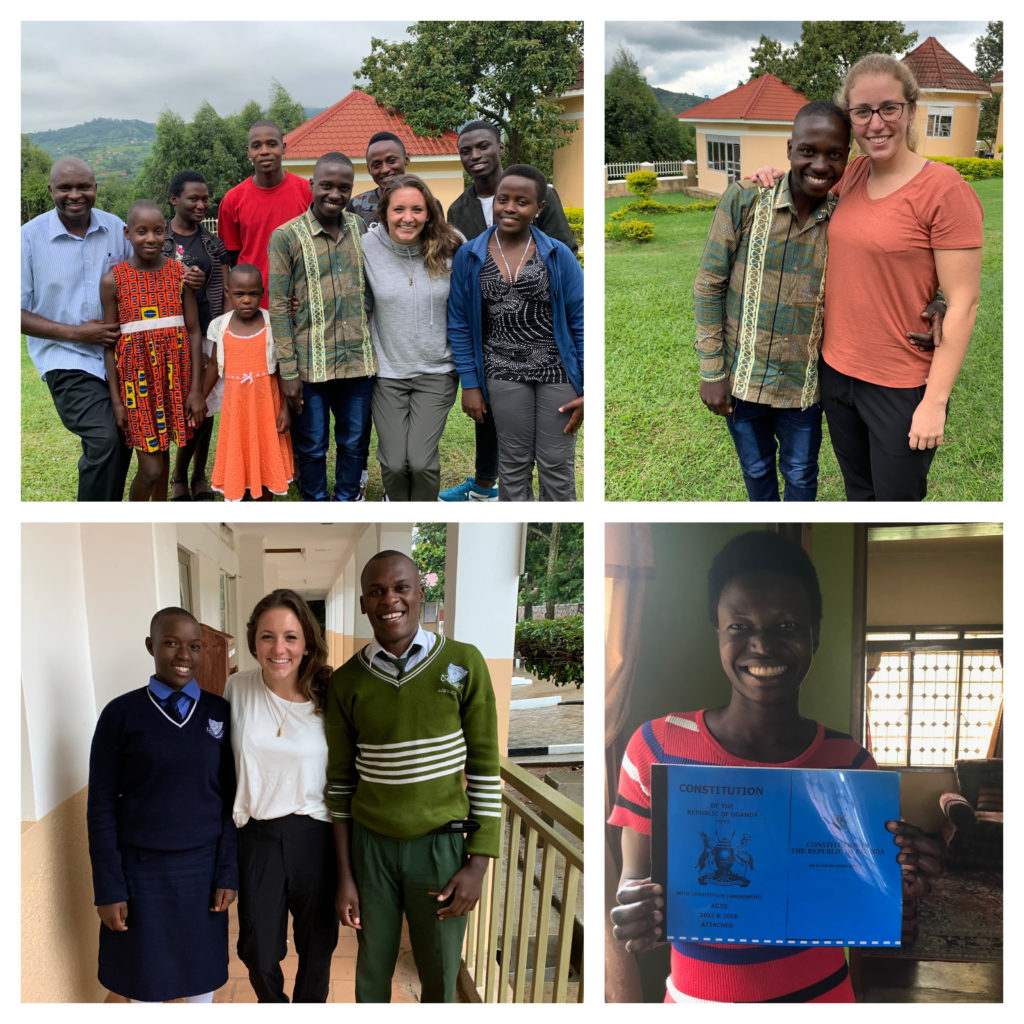Insight Paper April 29, 2020
A Week at the Intersection of Business and Education
Utilizing fundamental strategy execution and management in the non-profit setting.
As someone who generally enjoys stability, planning, and organization, it was January 25, 2020 and I found myself sitting on a plane headed to Uganda, having booked a ticket not even 36 hours prior in a whirlwind of planning and rearranging schedules. We hadn’t taken off yet, my mind was not quite yet wrapped around how quickly everything had unfolded, but my twin sister, Kristina, already had her laptop out and was working. This isn’t uncommon for her; as a dual MD/JD candidate at the University of Minnesota, she is used to juggling different industries and coursework on a daily basis (I’m convinced she must have a time turner to get it all done!). We were headed to Uganda to spend a week working with the students sponsored by So Others May Learn (SOML), a non-profit dedicated to providing educational scholarships to motivated and deserving students in Sub-Saharan Africa. Kristina founded SOML in 2006 at the age of 14, and it has continued to grow since then, now functioning in Zimbabwe, Uganda, and Zambia and supporting over 76 students.
Running a nonprofit in sub-Saharan Africa from the United States is no small task. There are international language barriers, wire transfers that need to be carefully tracked, systemic corruption, and difficulty communicating with individuals, schools, and students where internet is not always a guarantee. We are both fortunate to have built a network and extended community in Uganda when we started working there in 2011 through Harvard University’s Initiative to End Child Malnutrition (IECM). IECM was a collaboration with Harvard and Massachusetts General Hospital that provided comprehensive inpatient and outpatient treatment, medical support, and education to rural communities in Uganda with the goal of helping implement sustainable measures to reduce alarming rates of malnutrition in the pediatric community.
We spent summers and winter breaks in college working with Nyakibale Hospital students and staff and working with the neighboring communities to educate, screen for severe malnutrition, and offer treatment. Not only did this experience shape our career paths- I headed to graduate school for my Master of Education after seeing the need to understand more about systemic educational barriers and Kristina entered medical school. We gained lifelong friends who have become instrumental in supporting SOML. We also learned about how to navigate government and community systems, and were immersed in the culture, gaining an awareness and appreciation of how best to interact and offer our assistance to the communities.
The last minute trip to Uganda was due to some concerns about the management of funds, something difficult to sort through from the States and an unfortunately common concern given the unstable government and poverty in Uganda. Within hours of arriving, Kristina and I were visiting all of the schools at which SOML has students, meeting with the Heads of Schools and bursars, and obtaining contact information, routing numbers, and transcripts to update the files (SOML require that students stay in the top 10% of their class in order to continue their scholarship). We became a well-oiled machine of gathering required documents and contact numbers, and ensuring that students’ registration fees were paid for the next semester. The process was also one of many uncomfortable yet important reminders of our privilege. Simply by virtue of the color of our skin and affiliation to an international scholarship organization, we were whisked to the front of very long lines of local families also hoping to meet with school administrators.
After three intense days of focusing on the business side of SOML, we were finally able to gather with some of the older SOML students that were at boarding schools in Kampala, as well as younger students still in primary school in Rukungiri (a rural community in southwest Uganda, about 5 hours from Kampala). It is impossible to capture in words the laughs, smiles, and enthusiasm of the scholars when they were together! Bashil had traveled over three hours using three modes of transportation to meet with us, Daniel brought his older sister so she could meet Kristina after hearing about her for so long, and all of them couldn’t wait to show off their high national exam scores.

Despite this being my fifth trip to Uganda, the educator in me never ceases to be amazed by the ingrained dedication and care that the SOML scholars put into their schoolwork. Their level of drive and understanding that their education will directly impact their future easily rivals if not surpasses students at both of the top private schools at which I have worked. Education after primary school is not a guarantee for them for many reasons ranging from the cost (the school system after primary school is not free, and even in primary school, uniform and book costs make learning prohibitive for many), to travel barriers, to family responsibilities. Of course there are students in the United States facing difficult issues, but the compounded effect of living in a developing nation with severe economic barriers, corruption and health issues makes it hard to ignore the severity of the situation for SOML scholars. Prior to being enrolled in SOML, one of our scholars, Isaac, had to decide between being able to pay for his school fees or his malaria medication. This is a problem that no 15-year-old should need to decide for himself.
The consultant in me approached this trip with a completely new lens. I was focused on documenting and thinking about how SOML can continue to grow and what internal processes need to change in order to accommodate their goals for the next few years. Many financial security measures in the US simply cannot be implemented in Uganda. Simply obtaining a receipt for a money transfer can be a struggle, and documentation is still done all by hand and carbon copy receipts; very little is electronic. As SOML grows, the organizational structure will need to grow and adapt as well to update the website, communicate with sponsors, and manage the administrative and tax responsibilities. Keep in mind, SOML is a zero overhead non-profit so all board members and supporters donate their time and efforts.
There is a lot of work to be done at the intersection of business and education, and it is a path that I am passionate about pursuing. There is also a tremendous amount of work to be done worldwide to increase and improve educational access and disparities in outcomes. In the year I have been at Trexin, I have come to value the mindset and critical skills I am gaining to navigate both worlds and realize how much more I have to learn. I am incredibly grateful to Trexin leadership for supporting my passions and recognizing the importance of flexibility in the workplace to allow me this experience!
To learn more about So Others May Learn, please visit www.soothersmaylearn.org.

